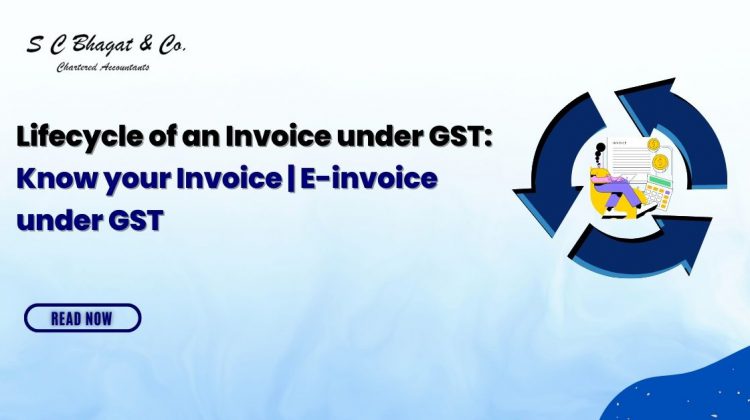The implementation of the Goods and Services Tax (GST) has transformed the landscape of taxation in India, simplifying processes and fostering transparency. Central to this transformation is the lifecycle of an invoice under GST, which plays a pivotal role in ensuring accurate tax reporting and compliance. Let’s embark on a journey to demystify the various stages that an invoice undergoes within the GST framework. Lifecycle of an Invoice under GST: Know your Invoice E-invoice under GST
- Invoice Under GST
An invoice under GST is a crucial document that serves as evidence for the supply of goods or services. It not only records the transaction details but also aids in calculating the applicable taxes. In the digital age, the concept of e-invoicing has been introduced to streamline the invoicing process further.
- Mandatory Fields to be Printed on an Invoice under GST and an E-invoice under GST
Both physical and e-invoices under GST need to include mandatory fields such as:
- Name, address, and GSTIN of the supplier and recipient.
- Invoice number and date.
- Description, quantity, and value of the goods/services.
- Taxable value and tax amount.
- Place of supply and delivery address.
- HSN/SAC codes.
- Lifecycle of an Invoice – B2B Invoice Data
- Invoice Generation Stage:
At the onset of the transaction, the supplier generates an invoice that complies with the GST rules. This invoice holds a comprehensive record of the transaction, ensuring transparency and accountability.
- IRN Generation:
In the case of B2B transactions, the generated invoice data is submitted to the GST Network (GSTN) for the generation of a unique Invoice Reference Number (IRN). The IRN is a unique identifier that ensures the authenticity of the invoice.
- Invoice Data Gets Auto-populated in GSTR 1
The invoice data, along with the IRN, is auto-populated into the supplier’s Form GSTR-1. This form contains a summary of all outward supplies made by the supplier.
- GSTR 1 Filing after Invoice Data is Auto-Populated
The supplier reviews the auto-populated GSTR-1 form and makes any necessary amendments or corrections. After ensuring the accuracy of the data, they file the GSTR-1 return, providing a comprehensive view of their outward supplies.
- GSTR 3B Filing
The recipient, upon receiving the goods or services and verifying the details, claims input tax credit (ITC) based on the supplier’s GSTR-1 data. The recipient then files their GSTR-3B return, consolidating their tax liabilities and availments.
- Auto-population of Invoice Data in GSTR 9
At the end of the financial year, the supplier reconciles their annual financial data with the GSTR-9 form. The GSTR-9 form auto-populates the invoice data from the GSTR-1 returns filed during the year, ensuring accurate reporting.
In conclusion, the lifecycle of an invoice under GST embodies the essence of transparency, accuracy, and accountability. Each stage of this journey, from invoice generation to tax return filing, ensures that the GST framework operates seamlessly, benefiting both businesses and the government. By following these steps meticulously, businesses contribute to the efficient functioning of the GST ecosystem, fostering a culture of compliance and trust.

